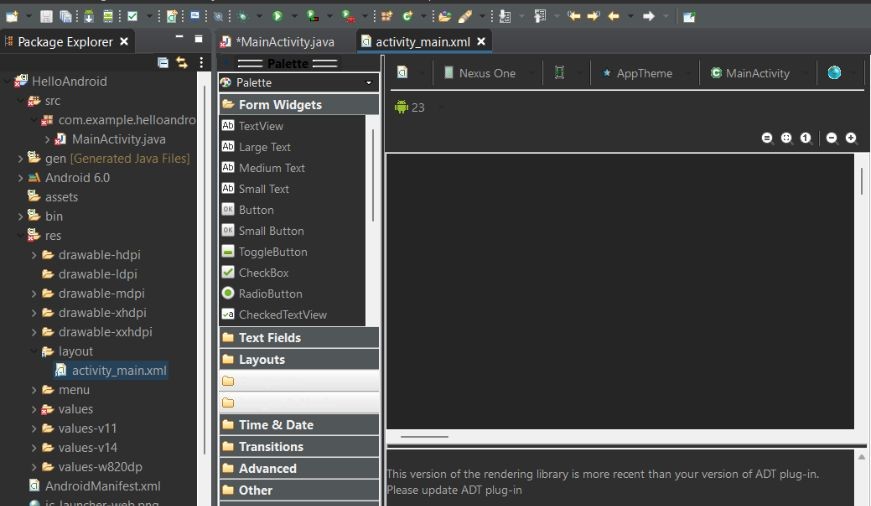
How do i Integrating Twitter API In Android App
To integrate the Twitter Log-in API into an Android app, the app Consumer Key (API Key) and Consumer Secret (API Secret) is required which can be generated from https://apps.twitter.com/. The Twitter API is integrated into an Android app usually for log-in using the Twitter account, to share tweets, etc.
To generate the Twitter API Key and API Secret:
- Create a Twitter Account at https://apps.twitter.com/.
- Click on the ‘Create an app’ button.
- Click on the Apply button to apply for a Twitter Developer Account.
- Click your primary reason for using Twitter Developer Tools.
- Click on Next.
- Your Twitter Developer Account is now created.
- Click on the ‘Create an app’ button to create an app.
- In the new open form, fill all the required details.
- Click on the ‘Create’ button.
- The application permission mode needs to be selected for the app.
- Select Read, Write, and Access direct messages.
- Click on the ‘Save’ button.
- Open the ‘Settings’ tab.
- Fill all the required details.
- Click on ‘Update Settings’.
- Open the Permissions tab again.
- Enable ‘Request email from users’.
- Click on ‘Update Settings’ again.
- The app ‘Consumer Key’ and ‘Consumer Secrets’, will be available at the ‘Key and Access Tokens’ tab.
Example:
In the below example, we are integrating login through a Twitter account in an Android app.
build.gradle (Module):
In the ‘build.gradle’ (Module) file, we will write the code to add the following twitter dependencies.
Code:
apply plugin: 'com.android.application'
android {
compileSdkVersion 28
defaultConfig {
applicationId "com.example.radioapp"
minSdkVersion 23
targetSdkVersion 28
versionCode 1
versionName "1.0"
testInstrumentationRunner "android.support.test.runner.AndroidJUnitRunner"
}
buildTypes {
release {
minifyEnabled false
proguardFiles getDefaultProguardFile('proguard-android-optimize.txt'), 'proguard-rules.pro'
}
}
sourceSets {
main {
assets {
srcDirs 'src/main/assets', 'src/main/res/assets/'
}
}
}
}
dependencies {
implementation fileTree(dir: 'libs', include: ['*.jar'])
implementation 'com.android.support:appcompat-v7:28.0.0'
implementation 'com.android.support:support-v4:28.0.0'
implementation 'com.android.support:support-annotations:28.0.0'
implementation 'com.android.support.constraint:constraint-layout:1.1.3'
implementation 'com.android.support:design:28.0.0'
testImplementation 'junit:junit:4.12'
androidTestImplementation 'com.android.support.test:runner:1.0.2'
androidTestImplementation 'com.android.support.test.espresso:espresso-core:3.0.2'
implementation 'com.google.zxing:core:3.2.1'
compile 'com.twitter.sdk.android:twitter:3.1.1'
compile 'com.twitter.sdk.android:twitter-core:3.1.1'
android {
useLibrary 'org.apache.http.legacy'
}
} |
build.gradle (Project):
In the ‘build.gradle’ (Project) file, the “jcenter()” should be present.
strings.xml:
In the strings.xml file, the ‘Consumer Key’ and ‘Consumer Secret’ generated by Twitter should be placed.
AndroidManifest.xml:
activity_main.xml:
In the activity_main.xml file, we will write the code to add the Twitter login button provided by the Twitter API.
Code:
MainActivity.java:
In the MainActivity.java file, we will write the below code. The ‘Twitter.initialize(this)’ code should be placed before the ‘setContentView(R.layout.activity_main)’. The Twitter button will disable, when the ‘Twitter.initialize(this)’ is placed after the ‘setContentView(R.layout.activity_main)’.
Code:
package com.example.radioapp;
import android.content.Intent;
import android.support.v7.app.AppCompatActivity;
import android.os.Bundle;
import android.util.Log;
import android.widget.Toast;
import com.twitter.sdk.android.core.Callback;
import com.twitter.sdk.android.core.DefaultLogger;
import com.twitter.sdk.android.core.Result;
import com.twitter.sdk.android.core.Twitter;
import com.twitter.sdk.android.core.TwitterAuthConfig;
import com.twitter.sdk.android.core.TwitterAuthToken;
import com.twitter.sdk.android.core.TwitterConfig;
import com.twitter.sdk.android.core.TwitterCore;
import com.twitter.sdk.android.core.TwitterException;
import com.twitter.sdk.android.core.TwitterSession;
import com.twitter.sdk.android.core.identity.TwitterLoginButton;
public class MainActivity extends AppCompatActivity {
TwitterLoginButton loginButton;
@Override
protected void onCreate(Bundle savedInstanceState) {
super.onCreate(savedInstanceState);
Twitter.initialize(this);
setContentView(R.layout.activity_main);
loginButton = (TwitterLoginButton) findViewById(R.id.login_button);
loginButton.setCallback(new Callback() {
@Override
public void success(Result result) {
// Do something with result, which provides a TwitterSession for making API calls
TwitterSession session = TwitterCore.getInstance().getSessionManager().getActiveSession();
TwitterAuthToken authToken = session.getAuthToken();
//String token = authToken.token;
// String secret = authToken.secret;
loginMethod(session);
}
@Override
public void failure(TwitterException exception) {
// Do something on failure
Toast.makeText(getApplicationContext(),"Unable to Login",Toast.LENGTH_LONG).show();
}
});
}
public void loginMethod(TwitterSession twitterSession){
String userName=twitterSession.getUserName();
Intent intent= new Intent(MainActivity.this,HomeActivity.class);
intent.putExtra("username",userName);
startActivity(intent);
}
@Override
protected void onActivityResult(int requestCode, int resultCode, Intent data) {
super.onActivityResult(requestCode, resultCode, data);
// Pass the activity result to the login button.
loginButton.onActivityResult(requestCode, resultCode, data);
}
} |
activity_home.xml:
The user after a successful login will be redirected to this activity.
Code:
|
HomeActivity.java:
In the HomeActivity.java file, we will write the code to display the user name received from the ‘MainActivity.java’ file in TextView.
Code:
package com.example.radioapp;
import android.support.v7.app.AppCompatActivity;
import android.os.Bundle;
import android.widget.TextView;
public class HomeActivity extends AppCompatActivity {
TextView name;
String user;
@Override
protected void onCreate(Bundle savedInstanceState) {
super.onCreate(savedInstanceState);
setContentView(R.layout.activity_home);
user=getIntent().getStringExtra("username");
name=(TextView)findViewById(R.id.nametextView);
name.setText(user);
}
} |



0 comments